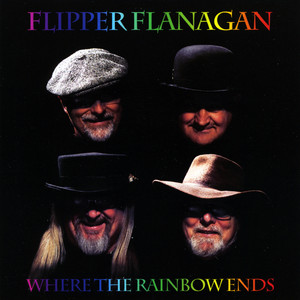
Where the Rainbow Ends
- 流派:Folk 民谣
- 语种:英语
- 发行时间:2010-08-12
- 类型:录音室专辑
- 歌曲
- 时长
简介
Flipper Flanagan is: Bob Balabuck - Left and right handed five-string banjo, fiddle, mandolin, tenor banjo and vocals Jamie Gerow – Six and twelve string guitars, slide guitar and vocals Brian Thompson – Mandolin, bodhran, shakers, tambourine, octave mandolin and vocals Jack Wall – Slap bass guitar and vocals with: Seonaid Gerow – cello on #4 and #11 Dean Hample – fiddle on #10 and whistle on #3 All songs SOCAN Photography and Design: Jarron Childs, Superior Images www.superiorimages.ca Recorded and mixed by Al Langlade at Langlade Studios in Thunder Bay, Ontario. Mastered by Steve Negus at “The Blue Room” in Hamilton Ontario. Flipper Flanagan’s Flat Footed Four is now in its forty-fourth year of laughing and singing together. Being a Flipper has meant living the dream at the end of the rainbow. Thunder Bay is a magnificent destination for any trip and it is a wonderful home. With that in mind, the city’s past echoes in The Voyageur. If you’re not here yet, we hope you’re traveling home. On the shores of MacLeod Lake, the Cormier and O’Quinn families were the inspiration for the The Woodstove Song . These Newfoundlanders who have made a home in Geraldton, Ontario shared with us the names of the key working parts of a woodstove. Thompson’s Jig was written by Bob Balabuck for his friend and fellow Flipper originator, Brian Thompson. Their friendship extends beyond the forty-four years Flipper has been making music. A speech by Michael Ignatieff in 2006 inspired Jamie to write Toujours Ensemble, a song about national unity. We are grateful to Bev White, Carol Volbracht and several Francophone friends who helped Jamie with the French words and pronunciation. They did their best. The errors are all Jamie’s. The Golf Song is dedicated to Jamie’s friend and neighbour, Paul Dennison. There are few golfers more committed to the sport. Where the Rainbow Ends, our title song, is a tune about optimism and recognition that the pot of gold at the end of the rainbow is right here in front of us. Laurie’s Hardware that used to be on Bay Street in Thunder Bay was a congregating point for gentlemen holding court in the Finnish language. It was the inspiration for The Sisu Chainsaw Store, an imaginary place where all the Finnish jokes come true. We deliver them with the utmost respect. Bob did considerable research and reminiscing to write Whalen’s Ride, the century long history of the tug boat that is now on display on the Kaministiquai River. We need to go fishing more and reading the works of Bernie Schneiders and Gord Ellis over the years have told us about all the fishing trips we missed. Mike the Pike is a testament to the conundrum that all fish must experience when we present them with that tantalizing lure. When we played for the Nakina, Ontario eighty-fifth anniversary, Bob had to cover for a string break. This banjo tune evolved from that moment and we soon added the call Nakina! Nakina! during practices and performances. In coastal towns, whether by the sea or on the shores of the damn big lake, houses near the shore often have railed platforms built on or into the peak of the roof. These rooftop platforms are called Widow’s Watch and inspired Jamie and Dean Hample to write about the suffering seafarers wives, waiting for the returning ship or the tragic news. When Jamie and his friend Rod Jackson were performing as “The Overlanders”, they waxed nostalgic for the days of wind and sail when they wrote Tall Ships. Thanks Rod, let’s write some more. The Outlaw Bridge was the first connection over the Pigeon River between Fort William, Ontario and Duluth, Minnesota. Legend has it that the bridge was designated “Outlaw” because the likes of Al Capone and John Dillinger had used it for smuggling during Prohibition and as an escape while running from the law. In truth, neither government sanctioned the bridge when the Rotary Clubs built it to facilitate their meetings, hence it's "outlaw" designation. Jack has fond memories of this great place to gather and party. While working in a hospital, Brian met an ancient gentleman who told Brian how he had been a cowboy and explained that the language of Canadian cowboys was Ukrainian. Chekai, Chekai Boychek or Wait, Wait Little One captures the spirit of those times and the hardships that all new Canadians must experience. The song ends with a version of the Kolomyjka which was taught to Bob by his father. It may have come from the West Carpathian mountains, but Bob learned it in Westfort. That portion of the recording is dedicated to Walter Balabuck. This CD represents the first time that Bob has played both left and right handed banjo. See if you can guess which songs are played with which banjo and then go to our website www.flipperflanagan.com to see the answers. We suspect that he is unique in the world but he's always looking for other ambidextrous players. There are songbooks for each of Flipper's CDs that you can download with all the lyrics as well.



